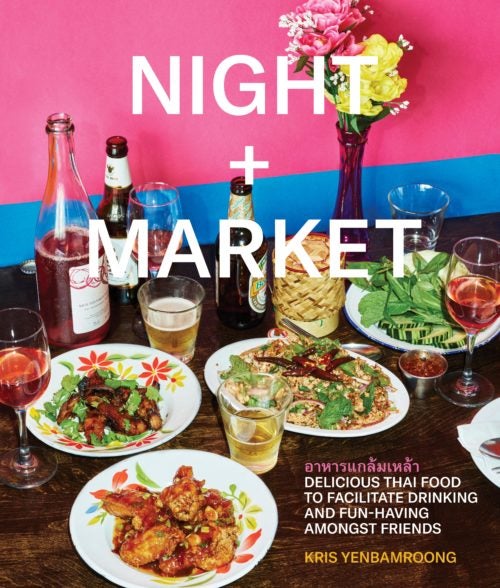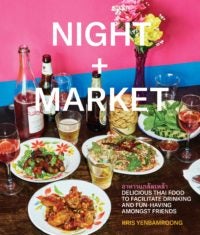
























Kris Yenbangroom shares his unique style of Thai cooking made famous at his L.A. restaurant in Night + Market.
Khao soi—the famed Burmese-Thai coconut curry soup with its own cult following—goes by many names. The way it’s referred to changes in the region. In Mae Chan, most people refer to it as Muslim khao soi and if you ask for straight up khao soi, you’ll be handed nam ngiew, which is the recipe right after this one. The semantics can be confusing. My dad, in his entrepreneurial wisdom, once dubbed the version our family cooked as C.C.C., or “Chiang Mai coconut curry,” as a sort of branding mechanism (it has yet to catch on, but I’m hopeful).
When I opened the restaurant, khao soi wasn’t on the menu. People would come into the restaurant and ask for it, like How can you serve Northern food and not have khao soi? The problem was Night + Market was never intended to be a compendium of Northern Thai greatest hits, like some authenticity-obsessives wanted it to be. It was just the things with which I was personally captivated, so not having khao soi wasn’t something I lost sleep over.
Yet the more I ate it in Thailand, the more I understood the obsession with it. The heart of the dish is the curry paste, which is beautiful when done right: earthy, smoky, fragrant, and surprisingly lacking in heat. Then you hit it with a splash of coconut milk, which lends richness. There are chewy egg noodles and a mound of crisp toppings, which turn it into a one-bowl meal.
Most of the labor involved in khao soi goes into making the curry paste, which you can prepare in large batches and keep in the fridge for weeks. Once that step is done, you’re assembling a simple curry. Remember that the broth should be slurpable—khao soi is technically a curry, but it should be thinner in consistency than most, more like a soup. In this recipe, we’re using hanger steak, but you could also substitute brined chicken or pork. We even offer a vegan version at the restaurant, which is made with tofu and oyster mushrooms and uses thin soy sauce instead of fish sauce.
Directions
- In a dry wok over medium heat, toast the turmeric, garlic, ginger, shallots, and chile segments separately, until blackened and slightly soft. This should take 5 to 10 minutes each, with the wetter ingredients taking longer to blacken.
- Transfer the blackened aromatics to a food processor, blender, or mortar and pestle along with the chile powder, cardamom, salt, and oil and blend until a thick paste forms. Store the paste in a sealed container in the fridge and use as needed—the paste will keep for several weeks.
- For the curry: In a large pot, combine the steak, salt, fish sauce, coconut sugar, and coconut milk. Bring to a simmer over medium heat and cook for 20 minutes.
- Skim off any beef gunk that has floated to the top. Stir in the khao soi paste, turmeric, and curry powder and simmer until the meat is tender, 40 minutes to 1 hour. Thin out the curry with 1¾ cups water, which should bring the consistency to something slightly thicker than a bisque or chowder (tweak the amount of water as needed). Bring the pot to a boil once more, then remove from the heat.
- Meanwhile, for the noodles: Measure out about 2 ounces of the noodles and set the remainder aside.
- Pour 3 inches of oil into a wok or large saucepan with several inches of clearance and heat over medium-high heat to 350°F. (Throw in a small bit of noodle; if it pops up and starts sizzling right away, the oil is ready. Or use a thermometer.) Fry the 2 ounces of noodles until crispy. Drain on paper towels.
- Boil the rest of the noodles until just cooked, according to the package directions. Drain and cool.
- Into four serving bowls, portion out the cooked noodles and top with the meat and curry. Dividing them evenly, top each bowl with fried noodles, bean sprouts, shallots, green onions, cilantro, and mustard greens. Drizzle the chile oil on top and serve with a lime wedge on the side. As you eat, try to get a little bit of each topping with every bite.
Reprinted from Night + Market. Copyright © 2017 by Kris Yenbamroong. Photographs by Marcus Nilsson. Published by Clarkson Potter/Publishers, an imprint of Penguin Random House, LLC.

